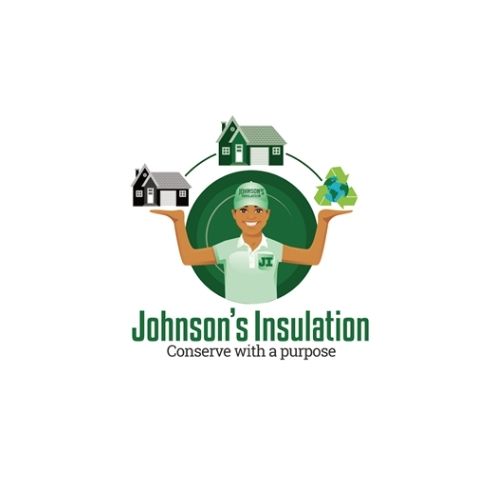
Johnsonsinsulation
Uploaded on Feb 20, 2025
Crawlspace encapsulation and insulation are two efficient solutions for enhancing residential energy efficiency and avoiding moisture damage. Insulation maintains indoor temperature, saving energy, while encapsulation offers full control over moisture, avoiding mold and structural problems. The choice between the two options relies on climate, budget, and current crawlspace conditions. Homeowners can determine the most effective solution to maximize comfort, reduce utility bills, and safeguard the foundation of their homes through a professional evaluation. For further details, visit https://johnsonsinsulation.green/crawlspace-insulation/
Crawlspace Insulation vs. Encapsulation | Which One Works Best?
CRAWLSPACE
INSULATION
VS.
ENCAPSULATION
WHICH ONE WORKS BEST?
Crawlspaces play a crucial role in a home’s
energy effi ciency, air quality, and structural
integrity. However, they are often overlooked,
leading to problems like moisture buildup,
mold growth, and pest infestations. Proper
crawlspace management is essential to
prevent high energy bills, poor indoor air
quality, and long-term damage. Two popular
solutions are crawlspace insulation and
encapsulation, each offering unique benefits.
Choosing the right option depends on
climate, budget, and the specific issues in
your crawlspace.
What is Crawlspace Insulation?
Crawlspace insulation is designed to
regulate indoor temperature by
preventing heat loss in the winter and
reducing heat gain in the summer. It
involves installing materials such as
fiberglass batts, rigid foam boards, or
spray foam along the crawlspace
walls or between floor joists.
Insulation is most effective in
ventilated crawlspaces, where airflow
is allowed, but it still requires
moisture control measures to prevent
mold and mildew.
Benefits of Crawlspace
Insulation
One of the main benefits of
crawlspace insulation is improved
energy effi ciency. By reducing heat
transfer between your home and the
ground, insulation helps maintain
stable indoor temperatures, leading
to lower heating and cooling costs. It
also makes floors feel warmer in
winter, increasing comfort.
Additionally, proper insulation
minimizes drafts and reduces strain
on HVAC systems, prolonging their
lifespan while keeping utility bills in
check.
What is Crawlspace Encapsulation?
Encapsulation is a more comprehensive approach to crawlspace management,
focusing on moisture control and air sealing. This process involves covering the
crawlspace floor and walls with a thick vapor barrier to block moisture from
entering. Additional measures like sealing vents, installing a dehumidifier, and
adding insulation further improve the crawlspace environment. Encapsulation is
ideal for homes in humid climates where moisture issues can lead to serious
structural damage and mold growth.
Benefits of Crawlspace Encapsulation
Encapsulation provides superior
moisture control, preventing mold
growth and musty odors that can affect
indoor air quality. By sealing off the
crawlspace, it also deters pests like
rodents and insects from nesting under
your home. Additionally, encapsulated
crawlspaces help HVAC systems run
more effi ciently, as they eliminate
damp, cold air from seeping into the
house. While the upfront cost is higher
than insulation alone, encapsulation
offers long-term savings by reducing
repair costs and improving
energy effi ciency.
Key Differences Between
Insulation & Encapsulation
Crawlspace insulation and encapsulation serve
different purposes, making it essential to choose
based on your home’s needs. Insulation primarily
regulates temperature, whereas encapsulation
focuses on moisture control. Insulation is generally
more affordable but may require additional
moisture management strategies. Encapsulation is
a more permanent solution for preventing water
damage and improving air quality but comes at a
higher initial cost. Understanding these differences
can help homeowners decide the best approach for
their crawlspace.
Cost Comparison & ROI
While insulation is a cost-effective way to improve energy effi ciency, it does not
address moisture issues on its own. Encapsulation, though more expensive
upfront, provides greater long-term benefits, reducing the need for frequent
repairs and lowering energy bills. Homes in humid climates or areas with
persistent moisture problems may find encapsulation to be a worthwhile
investment, offering protection against structural damage and improving indoor
comfort.
How to Choose the Right Option
Choosing between crawlspace insulation and
encapsulation depends on factors like climate,
budget, and existing moisture levels. If your
main concern is energy effi ciency and your
crawlspace remains dry, insulation may be
suffi cient. However, if you struggle with high
humidity, mold, or musty odors, encapsulation
is the better solution. In some cases,
combining both insulation and encapsulation
provides the best results, offering energy
savings and moisture protection
simultaneously.
Conclusion & Final Recommendations
Both crawlspace insulation and encapsulation
provide valuable benefits, but the best choice
depends on your home’s specific needs.
Insulation helps with temperature regulation,
while encapsulation provides complete
moisture control and improved air quality. A
professional crawlspace assessment can help
determine the most effective solution.
Investing in the right crawlspace treatment
can prevent long-term damage, lower energy
bills, and create a healthier home
environment.
Thank you very much!
(510) 660-0455
[email protected]
www.johnsonsinsulation.green

Comments